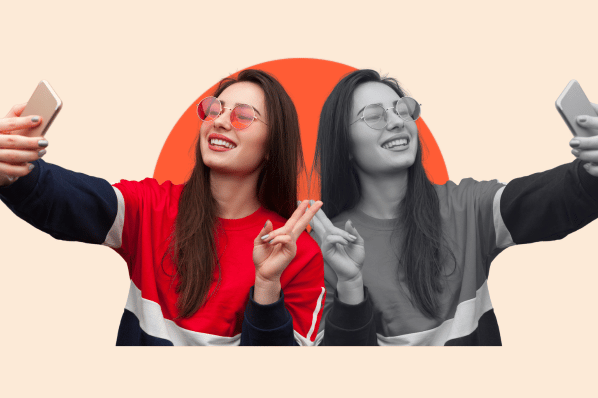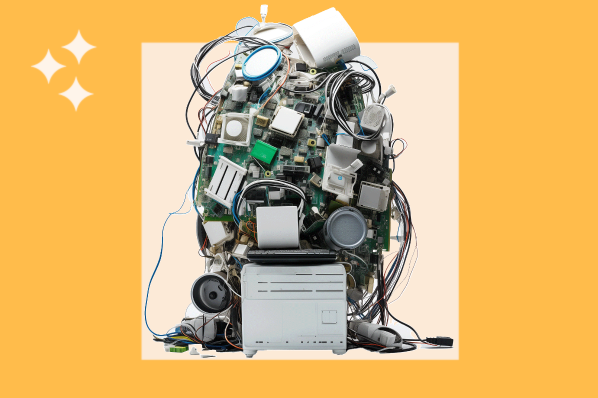In 2017, I first wrote about virtual influencers, which are computer-generated characters that exist primarily on social media. These virtual influencers are created with the help of computer graphics and AI.

Since 2017, the trend has continued to rise in popularity. Lil Miquela, a 19-year-old model, influencer, and singer, has garnered an impressive 2.7 million followers on Instagram, and has worked with major brands including Calvin Klein and Samsung.
As AI continues to advance, we'll likely see the world of virtual influencing progress as well.
And that brings us to this article: I didn’t get AI influencers then, and I still don’t get it now.
Why are we, as humans, so intrigued by non-human influencers? What do non-human influencers exhibit that is powerful enough to get us to purchase products from them, or engage with them at all?
I spoke with psychologists and researchers to uncover the bizarre yet undeniable draw many of us feel toward virtual influencers.
Why Social Media Users Are Drawn to AI Influencers, According to a Psychologist
Because it helps us avoid the comparison trap.
To tackle this question, psychologist Kristin Leimgruber starts by examining why social media influencers have such a pull over their users.
“Over a decade of research continues to confirm that, more often than not, social media use is tied to poor mental health outcomes like depression and anxiety, particularly in young adults,” she says. “One of the most powerful mechanisms driving this connection is the deeply rooted human tendency to compare ourselves to others … to size up the competition and see how we measure up.”
Leimgruber explained that, while this tendency to compare served us well over evolutionary time, it can become problematic when it pertains to the highly curated and unrealistic personas that dominate apps like Instagram and TikTok.
She believes that when it comes to social media, social comparison leads to expectations that are impossible to achieve — which can contribute to poor mental health.
“The allure of peeking behind the curtain into others' glamorous and aspirational lives is too strong, and we can’t help but follow along and go back for more,” she says.
Most of us know first-hand what she's talking about.
Social media scrolling can be addicting, exciting, and riveting but it rarely leaves its users feeling fulfilled.
The “comparison trap” many of us fall into makes social media a double-edge sword: Providing ways for us to connect and engage with others while simultaneously making us feel increasingly lonely.
Research has shown high rates of depression and anxiety are common among those who use social media often — particularly with younger generations, like Gen Z.
So what if that's the true draw of AI avatars? Not that they’re similar enough to real-life influencers, but that they're not.
Leimgruber posits that AI influencers allow people to tap into aspirational content at a safer and more comfortable distance.
“Following an influencer like Miquela on Instagram . . . satiates that hunger for vicarious glamour content that has become part of so many of our lives . . . but in a way that may provide just enough psychological distance that we don’t fall prey to the pitfalls of social comparison," she says.
She adds, "Research suggests a strong positive relationship between similarity and social comparison; specifically, the more characteristics you share with a person, the more you compare yourself to them … and the more power that comparison has to impact your self-esteem and mental health.”
Leimgruber suggests that the knowledge that this avatar isn’t real allows users to tag along for the ride with their mental health intact.
To her point, I don't feel that same twinge of envy or dissatisfaction about my own life when I follow Lil Miquela that I do when I scroll through other influencers’ feeds. I can laugh at her captions, smile at her posts, and then move on.
Perhaps, without realizing it, this is why users are drawn to AI influencers.
But researchers believe there are other reasons. Let's dive into those next.
Researchers Weigh In: What other factors influence a user’s decision to follow an AI influencer?
They're novel.
Sean Sands is a professor of Marketing at Swinburne University of Technology and in 2022, published a research study to understand consumers’ response to AI influencers.
When I spoke with Sands, he shared his thoughts on what drew users in.
“AI-generated social media influencers gained popularity at first due to novelty, with consumers being naturally curious about new tech and innovations,” said Sands. “So, people probably initially followed them out of curiosity.”
This is certainly true in my case. Once I'd discovered Lil Miquela for the first time, I couldn’t stop scrolling through her posts in a mixture of fascination and horror (no offense, Miquela).
Victoria Molin — a senior account manager at Social Garden who conducted her master’s thesis on virtual influencers while at Uppsala University — agrees with Sands.
“I think the novelty factor plays a significant role. People are naturally curious about the capabilities of AI, and AI influencers offer a glimpse into the future,” she said. “The technology itself is captivating, and watching AI avatars evolve and become more human-like is fascinating and entertaining.”
She's right that AI avatars will only continue to evolve into more human-like creations. I spent way too much time recently scrolling through Sophia the Robot's Instagram page — a Hanson Robotics creation that looks eerily similar to a human and has 222K followe.
They can personalize & tailor their content.
Sands believes that the reason consumers continue to follow these influencers after the novelty has worn off is due to their ability to personalize their content.
“AI avatars can be customized to align with users' specific preferences, interests, and values,” he said. “This personalization makes the content generated by AI avatars more relevant and engaging for followers.”
This is certainly true of Meta's new AI chatbots, which can respond with unique, tailored insights toward each user.
And my bet is virtual influencers will only continue to improve in personalization over time.
In the future, it will become easier to DM a virtual influencer and get a personalized, engaging conversation in response – something most human influencers don't have the time to do.
They're entertaining us all day, everyday.
Human influencers pose some real limitations when it comes to creating content on a 24/7 cycle.
Humans need sleep, relaxation time, social time, and other external factors that make them incapable of producing content around the clock.
This isn't the case for robots. And Molin believes this is part of their appeal.
“These avatars can maintain a 24/7 online presence, engage with their audience, and churn out content at a pace that's almost impossible for a human influencer,” she said. “This makes them reliable sources of entertainment.”
In a world in which we've become accustomed to content at our fingertips whenever we want it, we’ve all begun to feel entitled to being entertained at our whim.
And, when the human influencers are too busy human-ing, you can always depend on a virtual influencer to produce.
Do the risks outweigh the benefits for brands?
In 2016, Microsoft created chatbot “Tay” to engage in conversations on Twitter.
Very quickly, users began sending private messages to Tay containing racist, homophobic, and misogynistic statements, and Tay soon began repeating the tweets it was receiving from its users.
In other words: Garbage in, garbage out.
Sands points to this example as a poignant reminder that AI systems lack discernment when it comes to what it will or won't publish — which is a major risk when you’re employing an AI influencer to represent your brand.
As he told me, "AI systems are vulnerable to hacking or manipulation, potentially leading to malicious actors taking control of an AI influencer's content.”
If you're "hiring" a virtual influencer to work with your brand, this could pose a major risk if you don’t consistently monitor the content the AI system produces.
Molin echoes this sentiment.
“With the advancement of AI, there's a risk that these avatars could be used to spread misinformation, fake endorsements, or even engage in harmful behavior – all without ethical accountability,” she said.
What Virtual influencers Lack: Authenticity
Molin points out that while AI avatars have backstories (i.e. come with baggage) and can mimic human interactions, most users in her study found it hard to disregard the fact that it isn't a real person.
“This can make their content feel shallow or insincere,” she said, “undermining the authenticity that often drives engagement with human influencers."
And this, for me, is the crux of the issue I have with virtual influencers: Influencer marketing is so potent and valuable because it often mimics the interactions I have with my best friends.
When a trusted influencer tells me to purchase a new skin moisturizer she's loving, I do it — because that influencer has earned my loyalty and trust through meaningful, relatable content and one-on-one interactions with her followers.
But when a robot tells me to purchase a product, it's a different story. They can’t build trust, empathy, or relatability because they are not real.
Could inauthenticity be a good thing?
While I won't be purchasing products from an AI influencer anytime soon, psychologists like Leimgruber have a point.
Maybe the fact that they aren't real is a good thing from a mental health lens. It allows us to engage without getting pulled into the comparison trap.
Social media is inherently a curated, filtered version of someone's life. Recognizing the inauthenticity in an AI influencer is potentially less dangerous than the alternative — not recognizing how real people's posts can be, at times, equally misleading.











![How AI is Impacting SEO + What to Do About It [Expert Interview]](https://blog.hubspot.com/hubfs/how-ai-is-impacting-seo.png)